› Forums › Variable Stars › Outburst of the WZ Sge star V627 Peg
- This topic has 7 replies, 4 voices, and was last updated 4 years, 5 months ago by
 Robin Leadbeater.
Robin Leadbeater.
-
AuthorPosts
-
16 July 2021 at 9:54 am #575005
 David BoydParticipant
David BoydParticipantThe WZ Sge star V627 Peg has been reported in outburst by Maeda Yutaka (Japan) confirmed in observations by the ASAS-SN Sky Patrol and ZTF.
Christian Knigge (Southampton U) is putting together a multi-wavelength campaign to study the outburst. Amateur data will be welcome.
Last night (15th July) I observed the star at V magnitude 10.48 and rising. The following spectrum was recorded with a LISA spectroscope on a C11 scope.
David
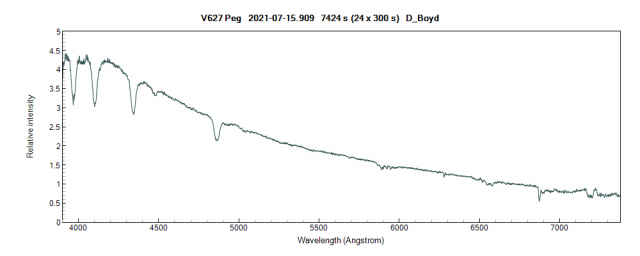
Attachments:
17 July 2021 at 12:03 am #584476 Gary PoynerParticipant
Gary PoynerParticipantI recorded it at 10.51CV on a SLOOH image on Jly 16.158 UT.
There is a close 151 star a couple of arc seconds away, so my measure was of a blended object. Very difficult at minimum visually to get a good measure.
Gary
20 July 2021 at 3:19 pm #584489 Jeremy ShearsParticipant
Jeremy ShearsParticipantChristian Knigge (U of Southampton) notes:
“I just wanted to flag up that we’re
currently still trying to follow the outburst of V627 Peg — one of the
closest WZ Sge stars that erupts only every 5 years (at best) and has
just recently gone off. I’m involved in a campaign to get X-ray,
ultraviolet and radio coverage of the outburst, alongside, of course,
optical.The thing is really bright in outburst — V ~ 8-10 or so — so it’s
great for high-cadence photometry or even spectroscopy, for anybody who
has a spectrograph. For our campaign, any long sequences would be
useful. Ideally we’d have long runs covering the full outburst in 2
filters, say B and V.In terms of spectra, time-resolved spectroscopy would be awesome — I’m
particularly interested in the transition from a pure absorption line
spectrum near plateau to a pure emission line spectrum in quiescence.
Where and how fast does this happen, and does it correlate with other
things happening at other wavelengths.Thanks!
Christian “21 July 2021 at 1:02 pm #584496 David BoydParticipant
David BoydParticipantRecent V-band data on the AAVSO website show strong modulation close to the orbital period of 0.05408978(5) d reported by John Thorstensen.
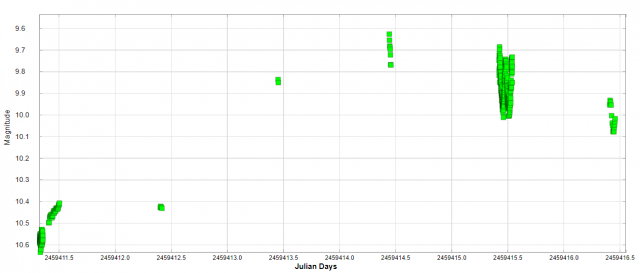
Peranso PDM analysis of 3 night’s data.
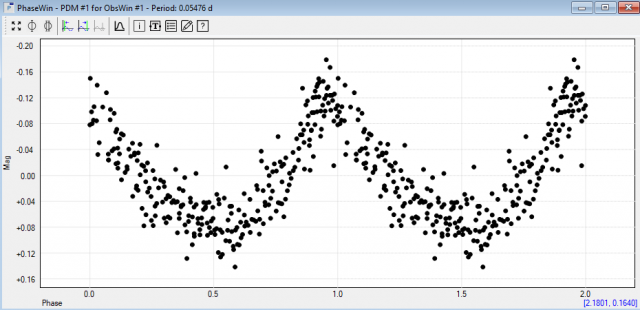
Spectra calibrated in absolute flux follow the changing brightness of the star with the Balmer lines evolving from initally pure absorption to now having emission cores.
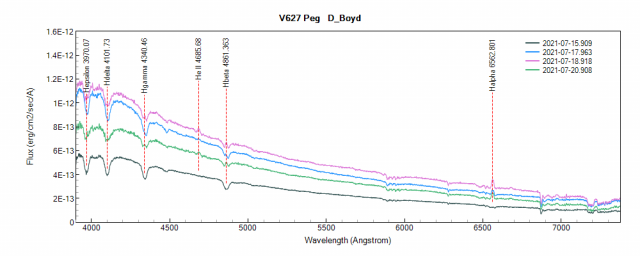
David
21 July 2021 at 8:08 pm #584497 Robin LeadbeaterParticipant
Robin LeadbeaterParticipantChristian Knigge also suggested following the He II / H beta region at higher resolution looking for RV variations. Here is 4 hour time series at 10 minutes cadence from last night with the LHIRES at R~2000 . Not sure there is much to see above the noise though (SNR in a 10 min exposure is ~50)
The average
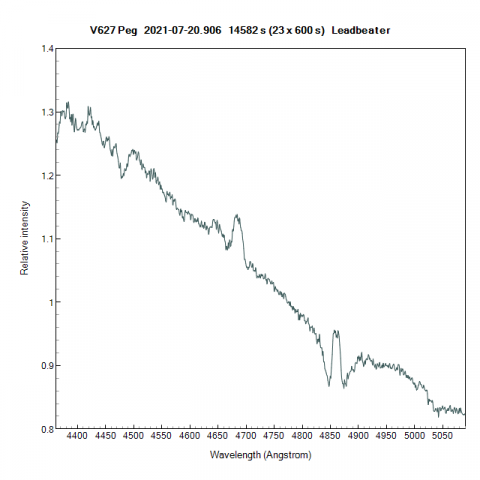
and the individual spectra (rectified)
_20210721_068_Leadbeater.png) 23 July 2021 at 12:38 am #584500
23 July 2021 at 12:38 am #584500 Robin LeadbeaterParticipant
Robin LeadbeaterParticipantThe intensity of the emission component of the Balmer lines and of the He II emission which have gradually been increasing has significantly reduced tonight. Is this expected behaviour or signs of a further outburst ?
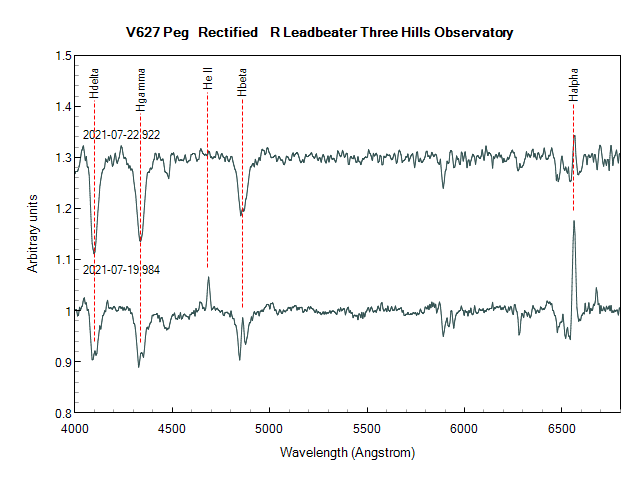
Cheers
Robin
23 July 2021 at 1:59 pm #584501 David BoydParticipant
David BoydParticipantI confirm what Robin reported above that the emission cores of the Balmer lines have progressively disappeared over the past 4 days. The spectral profile and flux of the star are now very similar to what they were on 15th July shortly after the outburst was detected.
David
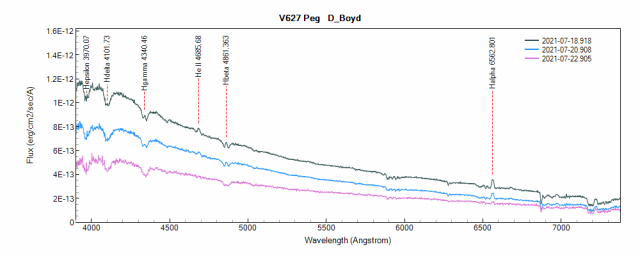 4 August 2021 at 11:13 pm #584569
4 August 2021 at 11:13 pm #584569 Robin LeadbeaterParticipant
Robin LeadbeaterParticipantAfter a brief plateau of a few days the brightness started dropping rapidly last night and the emission in the core of the Balmer absorption lines has increased.
Robin
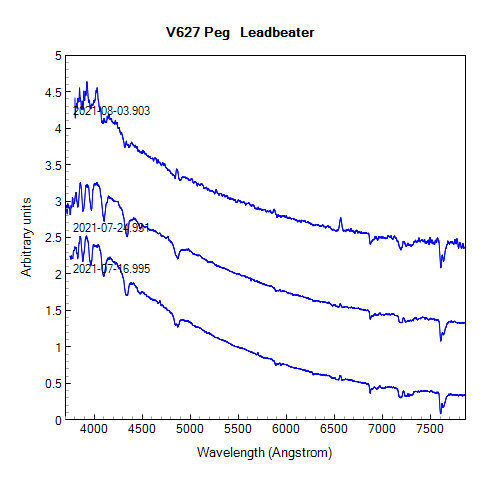
-
AuthorPosts
- You must be logged in to reply to this topic.
